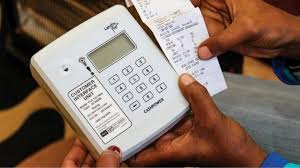South Africa’s electricity crisis has taken a new turn as prepaid meters across the country approach a technical reset. The looming issue could lead to power disruptions and reveals an R8.6 billion challenge that needs immediate attention. Here’s a look at the prepaid meter crisis and what it means for South African households and businesses.
1. The Prepaid Meter Problem Explained
Over the past two decades, millions of South Africans have relied on prepaid meters for their electricity supply. However, a technical limitation known as the “Token Identifier (TID) rollover” threatens to render these meters inoperable unless they are reset by 2024. With over R8.6 billion in prepaid electricity sales at stake, the urgency to address this issue is undeniable.
2. The Scale of the R8.6 Billion Crisis
South Africa’s prepaid electricity market is valued at billions of rands, supporting households, businesses, and municipalities. The potential failure of prepaid meters due to the TID rollover could result in unpaid electricity, loss of revenue, and disruptions for millions of South Africans. The estimated cost to fix and reset these meters is significant, with an immediate need for funding and efficient implementation.
3. How This Crisis Impacts South Africans
If the TID rollover issue isn’t resolved in time, customers may experience outages when attempting to recharge their meters. This crisis could impact low-income households disproportionately, as many rely on prepaid electricity to manage their usage and budget effectively. Power supply interruptions could also affect small businesses, leading to revenue loss and operational setbacks.
4. The Role of Municipalities and Eskom
Municipalities and Eskom bear much of the responsibility for resolving this prepaid meter crisis. However, many municipalities face financial strain, and implementing a mass reset of meters may be logistically challenging. Eskom has indicated its commitment to addressing the issue, but progress has been slow. Collaboration between municipalities, Eskom, and private stakeholders is critical for a timely solution.
5. Proposed Solutions and Roadblocks
Potential solutions include upgrading or reprogramming existing meters and launching public awareness campaigns to inform residents about the reset. However, funding remains a significant barrier, as the required investment is estimated to be in the billions. Additionally, logistical challenges, like reaching rural areas, may delay the implementation process.
6. Consumer Awareness and Next Steps
The government and municipalities must raise awareness about this issue to avoid panic and ensure a smooth transition. Households are encouraged to check with their electricity providers to understand if their meters will be affected. Staying informed will be crucial for consumers to avoid power disruptions.
7. A Wake-Up Call for Infrastructure Upgrades
The prepaid meter crisis is a stark reminder of the need for better planning and proactive infrastructure upgrades in South Africa’s power sector. Beyond just fixing the immediate problem, this situation calls for a more resilient and forward-thinking approach to energy infrastructure.

